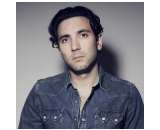
The bullet points of Ron Pope’s success in Spotify cover a three-year period from 2010 to 2013. During that time Pope’s tracks have been played 57-million times, and he has earned about $335,000 in Spotify royalties. In 2013, Spotify paid Ron Pope $200,000. He cites Spotify as his second-highest income source. He earns more money from download sales through iTunes. Live-performance income is fourth on his list.
The canon of anti-Spotify (and, more generally, anti-streaming) arguments is that royalty payments are unsustainably low, and musicians intending to make a living must get their money from touring and merchandise sales. Ron Pope’s experience turns that equation on its head. His Spotify profile indicates and nearly half of the 57-million streams are concentrated in one song, and nearly all of his activity is in 10 songs.
The level of engagement is unusual. Consider Arcade Fire, a much more celebrated indie act with major press and television exposure: the band’s top 10 songs on Spotify have garnered about 40-million streams. At the other end of the spectrum, superstar Bruno Mars has tallied about 450-million plays of his top 10 songs.
Ron Pope’s story seems to emblemize an ideal online-music success story: an Internet star who is not a household name and doesn’t need to be, who earns good money during a period of industry disruption thanks to a highly engaged fan base buying into the act through both downloads and streams.

